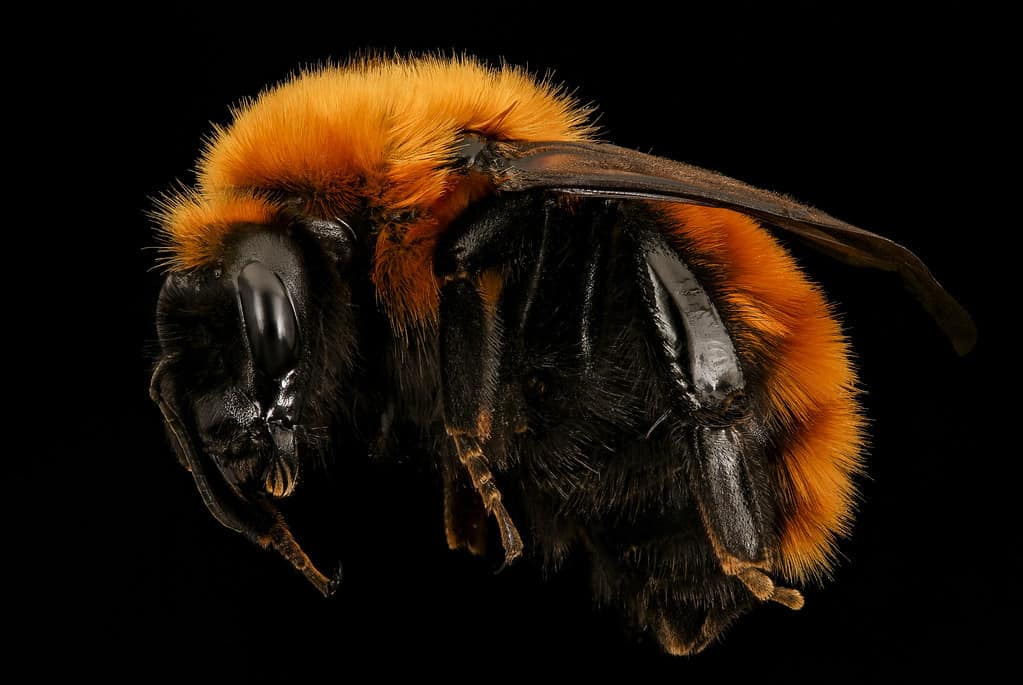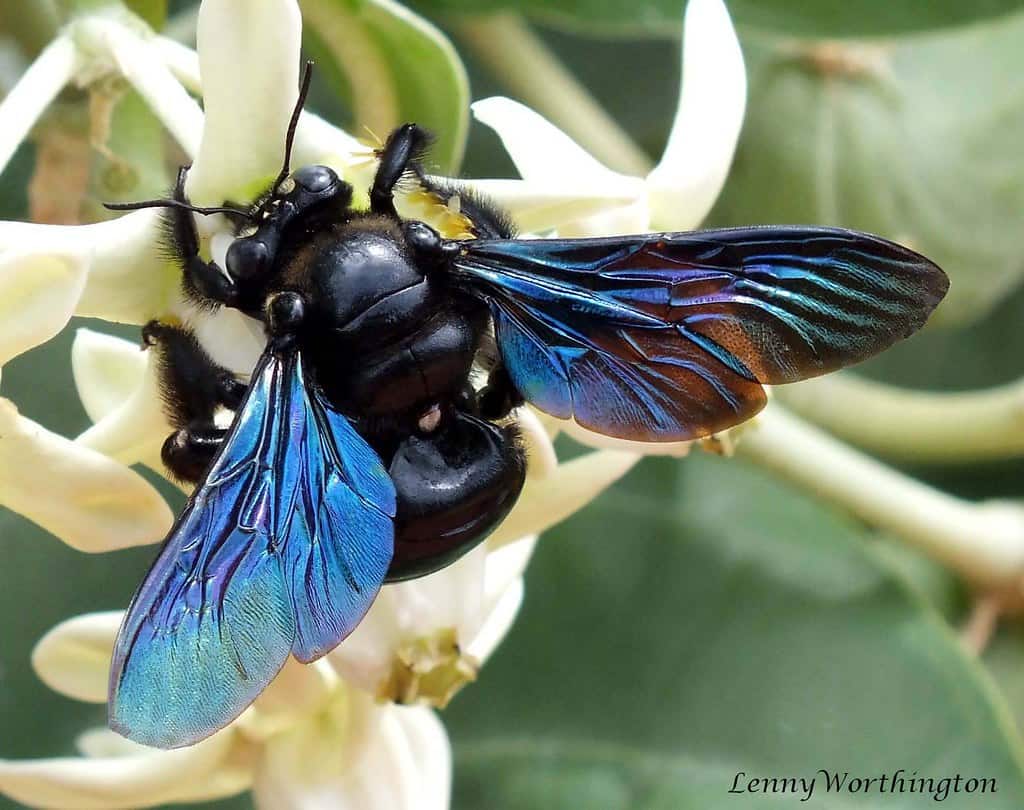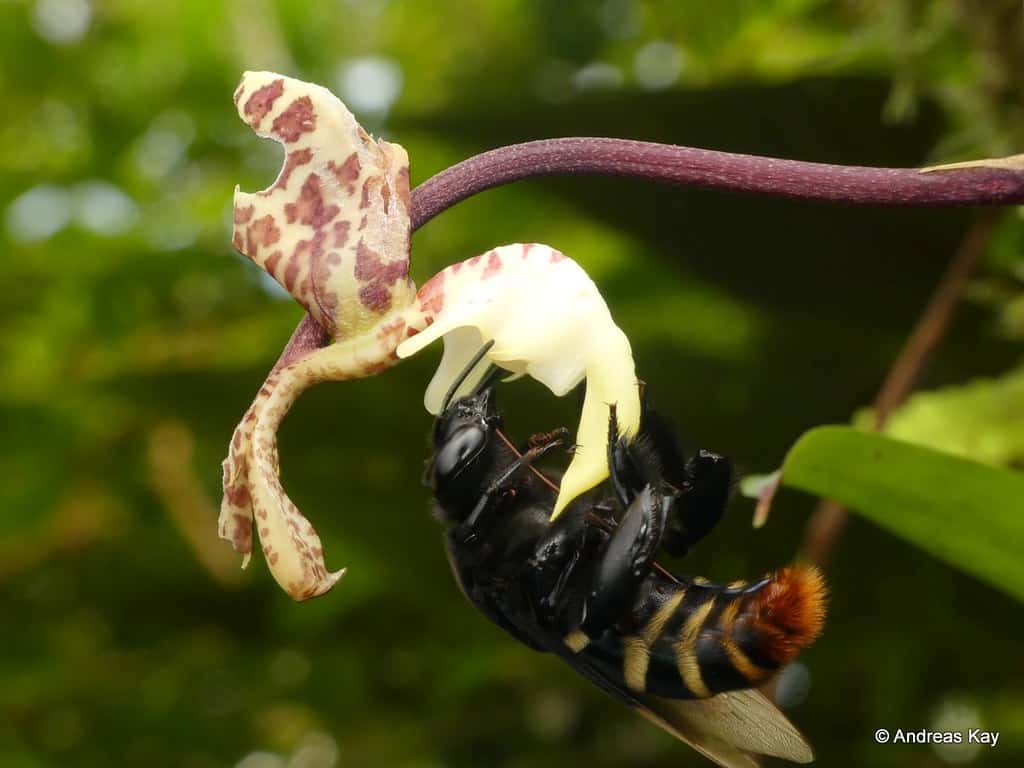There are an estimated 20’000 species of bees throughout the world, and this number could be even larger as many species are yet to be discovered. Given the vast number of differing bees, naming the biggest bees can be difficult. In eusocial species queens are usually larger than the workers and drones, which can add to a confusing method of measurement. Despite the tricky process of determining the largest species, there are undoubtedly several types of bees that stand out against the rest when it comes to their size.
Apis laboriosa; The Himalayan giant honey bee
Considered the largest honey bee, these beasts are twice the size as their Apis mellifera cousins. They are native to the Nepal, Bhutan, northern India, Vietnam, and parts of China. They create large nests that hang over cliffs at high altitudes. Some of the honey produced by the Himalayan giant bees are collected from white rhododendrons and contains a hallucinogenic toxin. Honey collectors in the area are able to sell this valuable honey for a very high price; often five times that of regular honey. The bee itself looks very similar to other honey bees, with the exception of its significant size and almost fully black abdomen.

Bombus dahlbomii; Patagonian bumblebee
Known for its large size, B. dahlbomii is also infamous for its vibrantly ginger hairs. As the name suggests, they are endemic to the Patagonia region, as well as other parts of southern South America. Many native plants depend on these bumblebees for pollination as they have formed a coevolution. Queen bees are the largest of course, sizing up at about 30mm in length—about the size of a large grape. Interestingly, the Patagonian bumblebee exhibits a behaviour that may set them apart from other bee species. As a whole, bees are unable to see the colour red and as such are far less likely to visit red flowers. Many of the native flowering species that the Patagonian bumblebee pollinates have red blooms, and although further research is required, this particular bee species may be able to determine the colour red.

Xylocopa latipes; Tropical carpenter bee
Carpenter bees are known for their large bodies. The tropical carpenter bee is no exception; at almost twice the size of a typical bumblebee, X. latipes is around 35mm in length. Their bodies and wings are entirely metallic black with a bluish gleam. Native to Southeast Asia, the tropical carpenter bee behaves very similarly to other solitary carpenter bees; burrowing in dead wood and making tunnels to lay eggs. In the Philippines, carpenter bees of several species including X. latipes are used for commercially pollinating the flowers of passion-fruits.

Eulaema meriana; orchid bee
Despite being the most widespread orchid bee in their native environments of South and Central America, E. meriana does not seem to have a particular common name. These solitary bees are unique in that while females are the pollinators in other bee species, both male and female orchid bees will perform pollination. It is worth noting that the males do not visit flowers to collect pollen, however. Instead, he seeks out fragrances produced by specific orchid flowers including vanilla, and stores these volatiles in his hollow hind legs. The specific orchid species forces the male to squeeze through a tight gap to reach the volatiles, and in doing so he comes out covered in pollen. Around 650 types of orchids engage in this form of pollination with male orchid bees.E. meriana appear like bumblebees, sizing up larger than a typical Bombus queen. They are black and brown with a shiny abdomen that often has pale yellow stripes.

Megachile pluto; Wallace’s giant bee
Considered to the largest bee on Earth, Wallace’s giant bee is endemic to Indonesia where it was thought to have been extinct for almost 40 years. The next time that the bee was observed was when two specimens were sold on eBay in 2018. The following year, footage of the bee in the wild was captured for the first time. Females are larger than their male counterparts, reaching a length just shy of 40mm. The females also have large mandibles like a stag beetle, and have a notably white stripe on their abdomen that contrasts with their otherwise black bodies. The Wallace’s giant bee is also known as the giant mason bee, but they are in fact resin bees. They are solitary but build nests in communes inside of active termite nests. Tree resin is used to make compartments to house their brood, which the females gather with the help of their intimidating mandibles.
